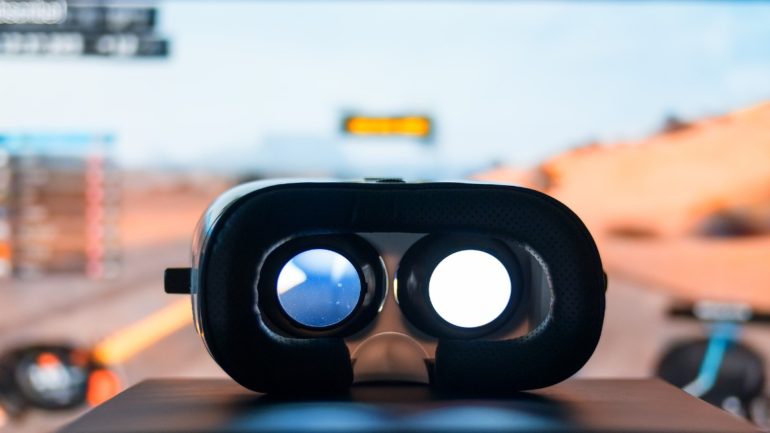An augmented reality (AR)-based social media network could significantly enhance end-user interactions. Currently, companies like the Mark Zuckerberg-led Meta Platform are heavily focused on creating seamless user experiences by harnessing a wide range of innovative technologies, including cutting-edge AR solutions.
However, the approach taken by some of the largest players in the industry does not necessarily have the ideal outcome. What’s needed is a social media network that seamlessly bridges the gap between the digital realm and the real world.
One of the central themes behind the development of these platforms is to fundamentally improve user experience and engagement. Industry experts believe that a sharp focus on AR may enhance the key elements of social media, such as bringing digital data into the real world. The developers of Peer are working on a wide range of solutions that aim to make the AR-driven social media world a reality.
User Experience Is Central to Mass Adoption
For any project to really appeal to mainstream users, it must provide a user-friendly and intuitive user interface. In addition to a frictionless experience, end-users need coherent product experiences that make blockchain tech useful and relevant to everyday life. Industry professionals also believe that innovative projects must provide a vertically integrated ecosystem that encompasses the complete blockchain stack. It should also include key services that work on top of it end-to-end, from the blockchain layer (L1) all the way to hardware (L4).
AR-driven platforms are no exception to these design guidelines. It’s also vital to develop such platforms by harnessing the benefits of an extensive IP portfolio that consists of utility and design patents in software and hardware. Another aspect to consider is developing innovative solutions without the excessive involvement of VCs or other third parties with conflicting interests.
While working on any project, it’s important to identify the customer segments, which could potentially include almost everyone. The development team behind Peer explains that they’ve created a blockchain experience that’s “not all about blockchain.” They claim that anyone may use the blockchain’s front-end, which is described as an AR Super App, for their own unique requirements.
Although there are many projects claiming to create innovative new models, there are only a few initiatives that are sharply focused on mixed reality and spatial computing. These efforts are intended to create a reality where the activities consumers perform on their devices join them in the physical (or real) world to enhance every moment of their lives.
According to Peer developers, they aim to disrupt the status quo by innovating and driving mass adoption like Bill Gates (who had envisioned a personal computer on every desktop in the 1980s) and offering seamless, user-friendly services like those conceived by Steve Jobs in the 2000s (consistent focus on the experience of the end-user).
Enhancing the Core Element of Social Media Networks with AR
Although there aren’t any major AR-driven social media networks currently available with truly mainstream adoption, it’s worth considering the impact of an AR-focused social network. It could enhance the core elements of social media, bringing digital experiences into the real world.
Peer is one such project that will enable crypto mass adoption via frictionless product experiences that make distributed ledger technology relevant for the typical user. It’s imperative for these services to provide a well-integrated ecosystem that contains the complete blockchain development stack and services that work alongside it in a seamless manner.
According to industry professionals, platforms focused on AR and social media should also support efforts aimed at creating an unmatched IP portfolio that covers real-world utility and design patents.
Currently, Web3-powered social media networks are still in their early stages of development and adoption. That’s why it’s critical to closely monitor the latest advancements in the crypto and blockchain space. Only time will tell what the future of AR and social media will ultimately look like, but we can make meaningful progress towards this goal by researching the projects focused on supporting this tech.
In addition to watching the space closely, it’s also important to consider the different use cases for AR-driven social media platforms. By leveraging the latest metaverse technology, it is possible to move towards an all-digital environment. Despite all the hype and noise already associated with this nascent industry, it is still worth exploring with the right approach. Only those teams that have skilled engineers, application developers, product designers, and business strategists will build innovative solutions for mainstream crypto adoption.
AR to Serve Key Role in Metaverse Adoption
According to industry observers, AR is expected to play a key role in the advancement of the Metaverse. Peer will work with industry participants to develop hardware and software experiences over a decentralized blockchain to support mass adoption and give people true ownership of their data while allowing them to monetize what they create online. Although this model has been proposed many times, there are not many blockchain projects that have actually delivered on this promise.
Most Web3 and crypto enthusiasts also agree that the Metaverse is inevitable. It is vital for developers to envision a clear path to a seamless AR experience in a coherent product that consumers will want to use on a daily basis. Blockchain solutions have the power and potential to give consumers what they need to go from digital experience to digital reality. This is the goal that will really drive innovation forward in a sustainable manner.

